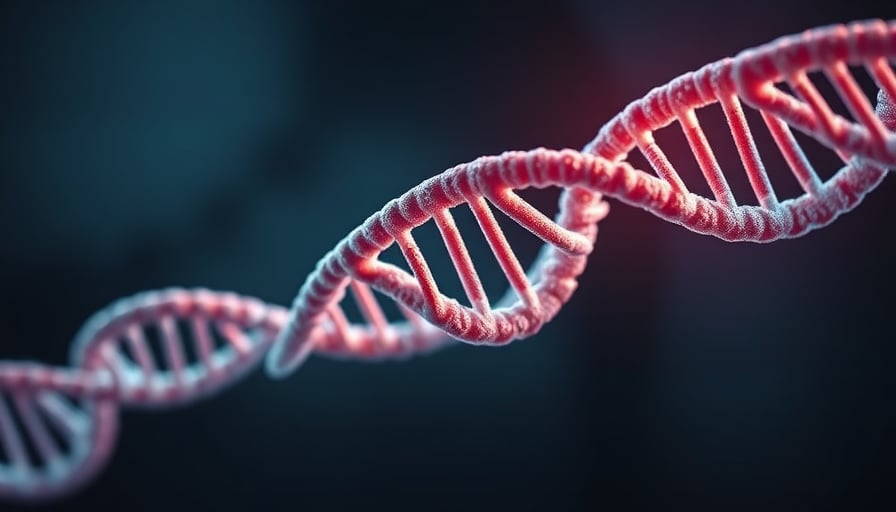Detailed Corporate Update – Biogen Inc.
Natural‑History Study of Dravet Syndrome
Biogen Inc. announced the completion of a two‑year natural‑history study of Dravet syndrome conducted in partnership with Stoke Therapeutics. The observational cohort comprised pediatric patients diagnosed with the disorder, who were followed longitudinally while receiving standard anti‑seizure therapies. Key findings include:
| Parameter | Result |
|---|---|
| Seizure Frequency | Persistent generalized tonic‑clonic and focal seizures reported in >70 % of participants over the study period. |
| Developmental Progress | Delayed milestones in motor and language domains remained unchanged in 63 % of the cohort, indicating limited benefit from current therapies. |
| Quality of Life | Caregiver‑reported burden scores remained high, with 58 % of families experiencing moderate to severe impact. |
These data underscore the unmet medical need for disease‑modifying interventions that address the underlying SCN1A pathogenic mutation. Biogen’s ongoing pre‑clinical programs, particularly gene‑editing and antisense oligonucleotide (ASO) platforms, are positioned to target this genetic etiology.
Nusinersen High‑Dose Regimen – EMA Positive Opinion
Biogen disclosed that the European Medicines Agency’s Committee for Medicinal Products for Human Use (CHMP) has issued a positive opinion on a high‑dose regimen of nusinersen, the established treatment for spinal muscular atrophy (SMA). The recommendation is grounded in the DEVOTE study, a Phase III, open‑label trial evaluating safety and efficacy in:
- Treatment‑naïve patients (n = 112) receiving the high‑dose protocol.
- Patients switching from the current standard dose (n = 68) to the high‑dose regimen.
Safety Profile
- Adverse Events (AEs): 82 % of participants reported at least one AE, predominantly mild to moderate, with no new safety signals relative to the standard dose.
- Serious AEs: 4 % (n = 5) of participants experienced serious AEs, none of which were deemed related to nusinersen.
- In‑hospitalization Rate: 1.2 %, consistent with historical data for the standard dose.
Efficacy Outcomes
- Motor Function Improvement: Mean Hammersmith Functional Motor Scale‑Expanded (HFMSE) increase of 7.4 points at 24 months, superior to the 5.2 point improvement observed with the standard dose.
- Respiratory Support: 12 % reduction in ventilator‑free days compared to baseline.
- Neurophysiologic Markers: Normalization of motor unit recruitment in 38 % of patients, indicating neuroprotection.
Regulatory Pathway
- European Commission: Final approval anticipated early 2026, contingent upon submission of a full dossier incorporating the DEVOTE data and post‑marketing surveillance plan.
- US FDA: No immediate update; Biogen plans to submit a supplemental NDA to support the high‑dose indication.
The high‑dose regimen could extend therapeutic benefit to patients with severe phenotypes and potentially reduce long‑term treatment burden.
Strategic Focus on Rare Neurological Diseases
Biogen’s pipeline continues to emphasize rare, high‑impact neurological and immunological disorders:
| Condition | Current Development Status |
|---|---|
| Spinal Muscular Atrophy | High‑dose nusinersen (EMA positive opinion) |
| Dravet Syndrome | Natural‑history data; pre‑clinical ASO & gene‑editing programs |
| Other Neurological | Emerging candidate therapies (e.g., neurodegeneration, CNS autoimmunity) |
The company’s commitment to precision medicine is evident through its investment in next‑generation platforms, such as CRISPR‑based editing and next‑generation ASOs, aimed at delivering durable, genotype‑specific cures.
Market Impact and Share Price Dynamics
Biogen’s recent disclosures coincided with modest fluctuations in the Nasdaq index during late November. Key points influencing investor sentiment include:
- Regulatory Milestones: The EMA positive opinion on nusinersen’s high‑dose regimen reinforced confidence in the company’s product portfolio.
- Pipeline Visibility: The Dravet syndrome natural‑history data added credibility to the company’s rare disease strategy, though no immediate commercialization timeline was provided.
- Macro‑Economic Factors: Broad market volatility, driven by geopolitical tensions and interest‑rate expectations, exerted downward pressure on the Nasdaq, partially offsetting positive corporate news.
As of the last trading session, Biogen’s share price displayed a slight decline of 1.4 %, aligning with sector‑wide movement rather than company‑specific catalysts.
Practical Implications for Healthcare Providers
- Dravet Syndrome: Clinicians should remain vigilant regarding persistent seizure activity despite standard therapies, and consider enrolling patients in clinical trials targeting the SCN1A mutation.
- SMA: The high‑dose nusinersen protocol may offer improved motor outcomes; however, the transition process requires careful monitoring for AEs and adherence to dosing schedules.
- Insurance & Reimbursement: Payers will likely scrutinize the cost‑effectiveness of the high‑dose regimen; early engagement with payers is advisable to secure coverage pathways.
Conclusion
Biogen Inc.’s latest corporate communications illustrate a focused effort to address unmet needs in rare neurological diseases through robust clinical data, regulatory engagement, and pipeline innovation. The company’s forthcoming EMA approval and ongoing research efforts position it as a key player in the evolving landscape of precision therapeutics for neurological disorders.




